General information about the project
Only about 4% of Zambia’s rural areas are supplied with electricity. However, an electricity supply in these areas would bring great added value for the people living there and their living conditions. One possible approach to improve this situation is the use of off-grid nanogrid systems.
Based on this background knowledge, the use of different energy sources will be evaluated and compared. With this basis, an off-grid system will be tested for its validity and feasibility with the use of a model. Different scenarios are developed to give a realistic picture of a rural area in Zambia and serve as a basis for a model.
In the context of the European Project Semester (https://www.novia.fi/en/eps), this project will be the basis for further projects. Based on the created model for an off-grid system in rural Zambia, further optimisation measures can be taken.
Objectives
- Development of a basis for increasing the electrification rate of rural areas in Zambia.
- Creating energy usage patterns for a village of ten households and public utilities.
- Designing an affordable solution for producing and storing renewable energy for small villages in rural Zambia.
- Creating a digital simulation for the design and dimensioning of an off-grid system.
Nanogrids
A nanogrid is defined as a single domain for voltage, reliability, and administration. It must include at least one load and one gateway to the outside. The load in this scenario could be a sink of power or also storage. (Nordman, 2012) All these components are operated by one controller, which can be seen in the figure below.
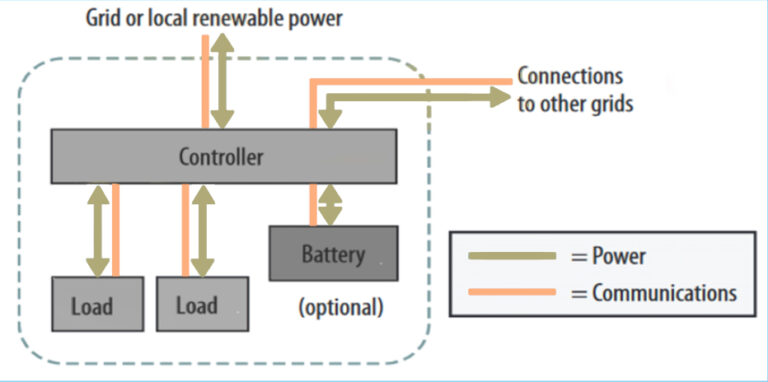
Scenarios
The project is based and calculated on 4 different scenarios in a Zambian village. All of these scenarios have a 10 house-hold village as a basis.
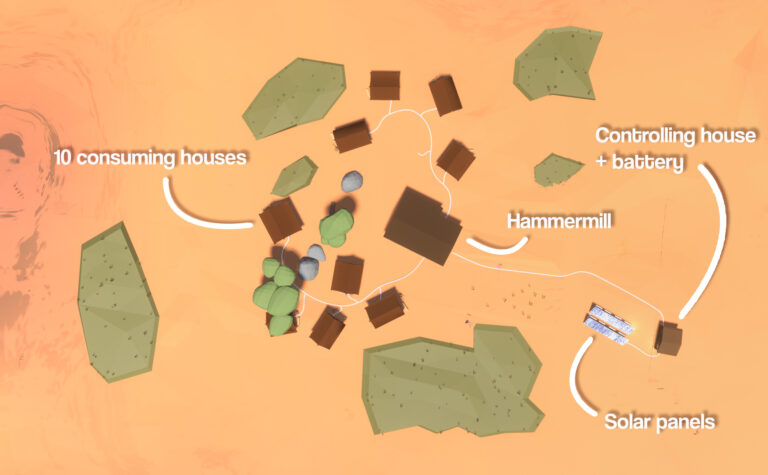

The setup of the basic Zambian village is based on the informational presentation (Design and Analysis of an off grid solar system) by one of the stakeholders of this project, The Copperbelt University. The basic setup consists of the 10 houses, 8 solar panels, a battery, and an hammermill. The inhabitants use this hammermill to create their food from their crops.
Scenario 1 – Juvenile village, 1.3 kWh/day/house, hammermill max 3 times used per 2 weeks for 1 hour.
Scenario 2 – Juvenile village, 1.3 kWh/day/house, hammermill max 3 times used per 4 weeks for 30 min.
When the juvenile village is supplied, there is a potential for exponential development. This will lead to more energy consumption and acquire different scenarios.
Scenario 3 – Adolescence village, 2 kWh/day/house, hammermill max 3 times used per 2 weeks for 1 hour.
Scenario 4 – Adolescence village, 2 kWh/day/house, hammermill max 3 times used per 4 weeks for 30 min.
Findings
- Scenario 1
- Scenario 2
- Scenario 3
- Scenario 4
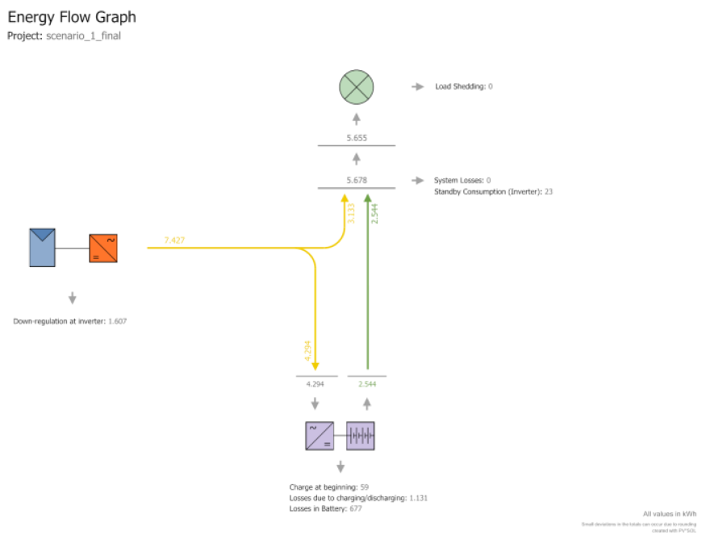
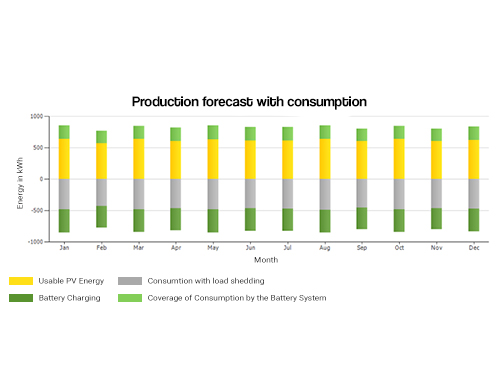
Solar panels | Quantity: 10 Solar panels Power: 4.45 kWp |
Battery | Capacity: 59.4 kWh Power: 7.5kW |
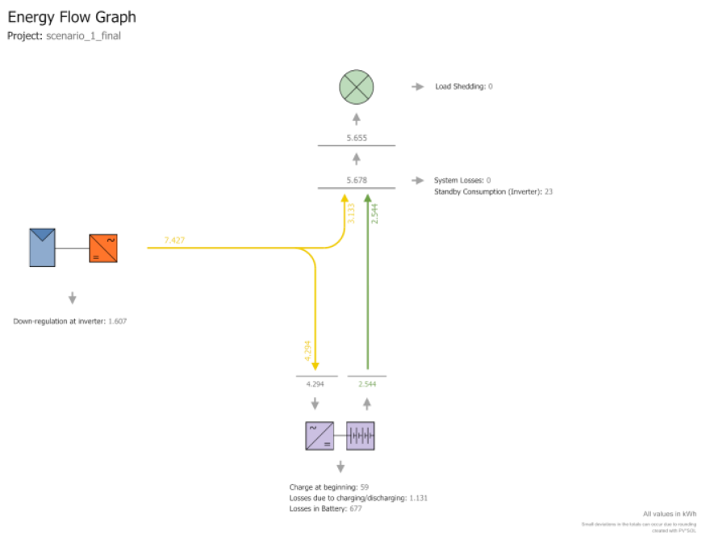
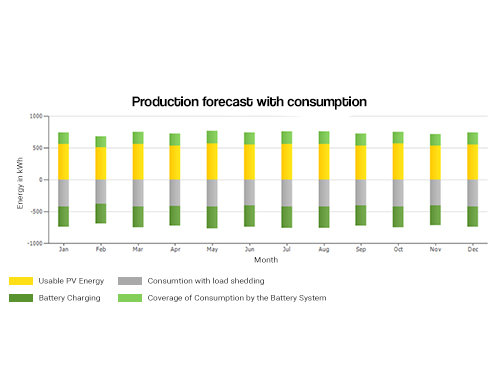
Solar panels | Quantity: 8 Solar panels Power: 3.56 kWp |
Battery | Capacity: 3.794 kWh Power: 7.5kW |
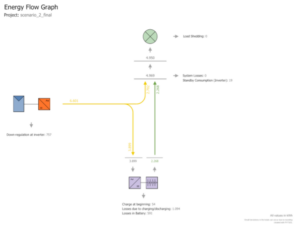

Solar panels | Quantity: 13 Solar panels Power: 5.79 kWp |
Battery | Capacity: 100.8 kWh Power: 7.5kW |

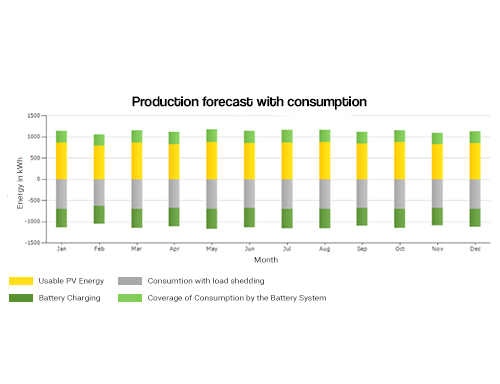
Solar panels | Quantity: 12 Solar panels Power: 5.34 kWp |
Battery | Capacity: 86.88 kWh Power: 7.5kW |
As a result of all the simulations conducted, a system with eight solar modules and a 3.794 kWh battery is assumed as the minimum requirement. The maximum requirement consists of a system with thirteen solar modules and 100.8 kWh. Thus, a design is supposed to be based on scenario 3.
Stakeholders
Stakeholders are people that are interested in the project.
The stakeholders for our project are Novia University of Applied Sciences, the University of Zambia, the Copperbelt University and the Rural Electrification Authority.



